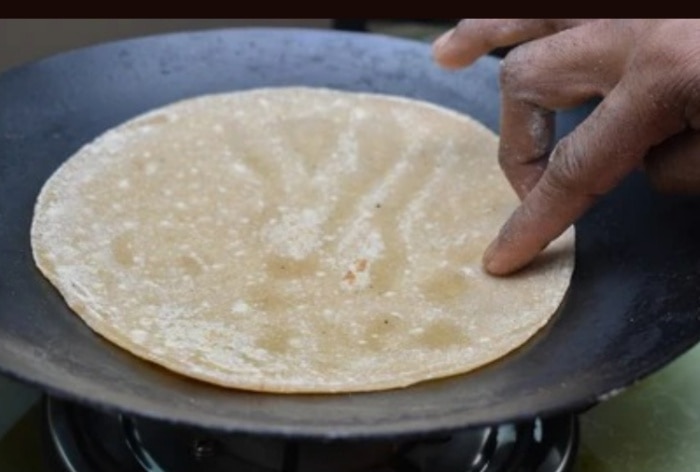In Indian households, the traditional method of cooking chapatis involves roasting them directly on an open flame. However, there has been some debate about whether this method is healthier than cooking them on a gas stove. Let’s discuss the benefits of cooking chapatis on a tawa or direct flame and determine which option is better.
Chapati, also known as roti, is a staple Indian bread made from wheat flour, water, and salt. Typically, it is cooked on a hot griddle or tawa. Many Indian households prefer to roast chapatis directly on a flame using tongs. However, some studies have claimed that this popular cooking tradition can be unhealthy and increase the risk of cancer.
However, there is no significant scientific evidence to support the claim that cooking chapatis on a direct flame can cause cancer. Studies have shown that the levels of carcinogenic compounds produced during the cooking of chapatis are low and unlikely to pose a significant health risk. According to Dr. Shyam Aggarwal, a senior consultant at Sir Ganga Ram Hospital, high-temperature cooking can potentially damage DNA, but the human body has a natural mechanism to repair and eliminate such damaged cells. So, there is no clear correlation between high-temperature cooking and cancer.
In terms of which method is better, celebrity nutritionist Shweta Shah suggests using a tawa. While cooking chapatis directly on a flame may save time, there are a few cautions to consider. The roti may not be evenly cooked, and some parts may burn or turn black. Additionally, cooking directly on the flame can attract particles from the gas stove, which may enter the roti and make it harmful to health. Using a tawa ensures even cooking and avoids these potential issues.
Cooking chapatis on a tawa has several benefits. The tawa evenly distributes heat, ensuring that the roti is cooked evenly. It also helps retain the nutrients such as fiber, protein, and carbohydrates in the roti, as it is not cooked at a high temperature. Furthermore, cooking on a tawa requires less oil or ghee, making it a low-fat cooking technique. The tawa efficiently holds heat, allowing the roti to cook quickly without sticking or burning.
In conclusion, while there is no evidence linking cooking chapatis on a direct flame to cancer, it is generally recommended to cook them on a tawa. Cooking on a tawa ensures even cooking, retains nutrients, and uses minimal oil or ghee. So, it is better to stick to the traditional method of cooking chapatis on a tawa rather than directly on a flame.

